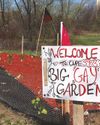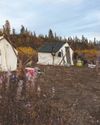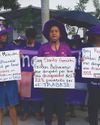The homeless shelter system in Canada’s largest city is in crisis. Toronto’s sky-high rental market,government cuts to social housing and assistance benefits, and a city council that voted against immediate respite during a recent cold snap are jeopardizing the lives of homeless people.
But anti-poverty and housing activists are fighting the systemic abandonment of homeless people, andthey’re winning important gains.

In February of 2017, Pierre Gregoire tried to get into a downtown warming centre that would offer him a mat on the floor, but it was packed to capacity. He was offered a spot on the waiting list. Shortly after leaving the warming centre, he died of a suspected fentanyl overdose in the bathroom of a Kentucky Fried Chicken restaurant. Gregoire, a 28-year-old Indigenous man living on the streets of Toronto, was one of 94 homeless people – most of whom were younger than 50 – who died in Toronto in 2017.
Poor and homeless people in Toronto are in the midst of a deadly and intensifying crisis. Emergency shelters in the country’s largest city have been overwhelmed for years, forcing drop-in centres and volunteer-run overnight programs to operate as de facto shelters to shoulder the overflow. Even so, there isn’t space for everyone and many are left with nowhere to go.
For years, homeless people, front-line workers, and advocates have been sounding the alarm about the rise in homelessness and the shortage of shelter beds. Among their most urgent demands have been the calls to add at least 1,000 new permanent beds in order to lower occupancy levels, and to open the two federal armouries as an interim measure to provide immediate respite. These two armouries were used four times between 1996 and 2004 and have the capacity to provide shelter for up to 300 people. They have showers, adequate washrooms, and cots. In the past, the armouries have taken pressure off a shelter system straining to meet existing needs.
この記事は Briarpatch の March/April 2018 版に掲載されています。
7 日間の Magzter GOLD 無料トライアルを開始して、何千もの厳選されたプレミアム ストーリー、9,000 以上の雑誌や新聞にアクセスしてください。
すでに購読者です ? サインイン
この記事は Briarpatch の March/April 2018 版に掲載されています。
7 日間の Magzter GOLD 無料トライアルを開始して、何千もの厳選されたプレミアム ストーリー、9,000 以上の雑誌や新聞にアクセスしてください。
すでに購読者です? サインイン

PLATFORMS FOR PEOPLE, NOT PROFIT
Digital platforms boast that they’ve “democratized” cultural production. But what would truly democratic platforms look like in Canada?

ORGANIZING THROUGH LOSS IN THE HEART OF OIL COUNTRY
The story of climate justice organizing in Alberta, at the heart of the tarsands, is the story of a group of young activists learning what it means to lose, and keep on fighting

GROWING THE LABOUR MOVEMENT
How unions are using community gardens to engage members, nourish communities, and help strikers weather the picket line

A NEW ERA FOR OLD CROW
In the Yukon’s northernmost community, the Vuntut Gwitchin First Nation is reckoning with how to preserve their land and culture, amid a warming climate and an influx of tourists

“At Least Hookers Get Wages”
The risky business of sex work in the gig economy

The Literal – And Literary – Futures We Build
Briarpatch editor Saima Desai talks to two judges of our Writing in the Margins contest about Idle No More and MMIWG, ethical kinship, writing queer sex, and their forthcoming work.

The Cost Of A T-Shirt
In Honduras, women maquila workers are fighting back against the multinational garment companies that they say are endangering their health and safety.

Milking Prison Labour
Canada’s prison farms are being reopened. But when prisoners will be paid pennies a day, and the fruits of their labour will likely be exported for profit, there’s little to celebrate.

Bringing Back The Beat
In mainstream media, labour journalism has been replaced by financial reporting and business sections. But journalism students are raising the labour beat from the grave.

There's No Journalism On A Dead Planet
Corporate media owners are killing local newspapers – which is making it impossible for everyday people to understand the on-the-ground impacts of the climate crisis